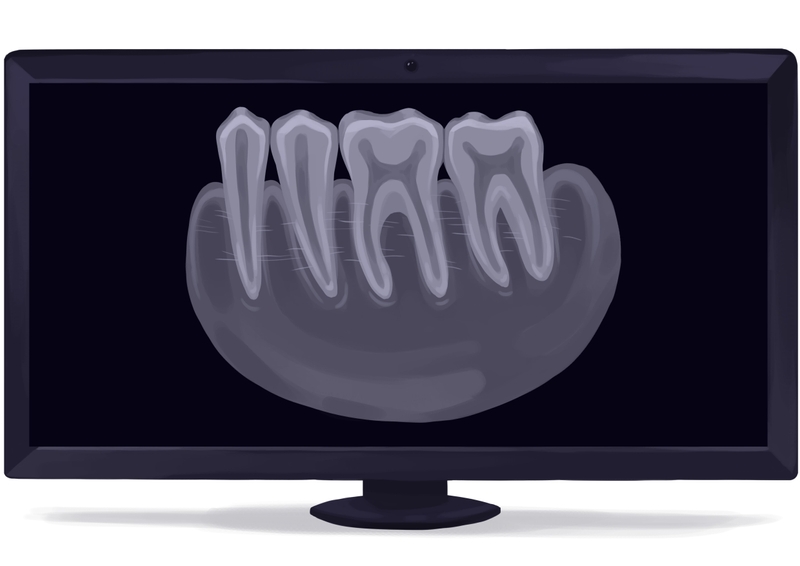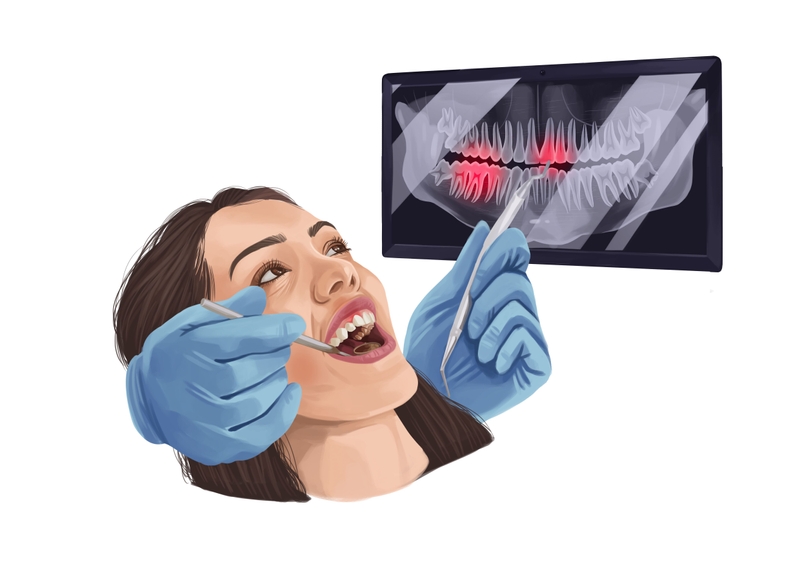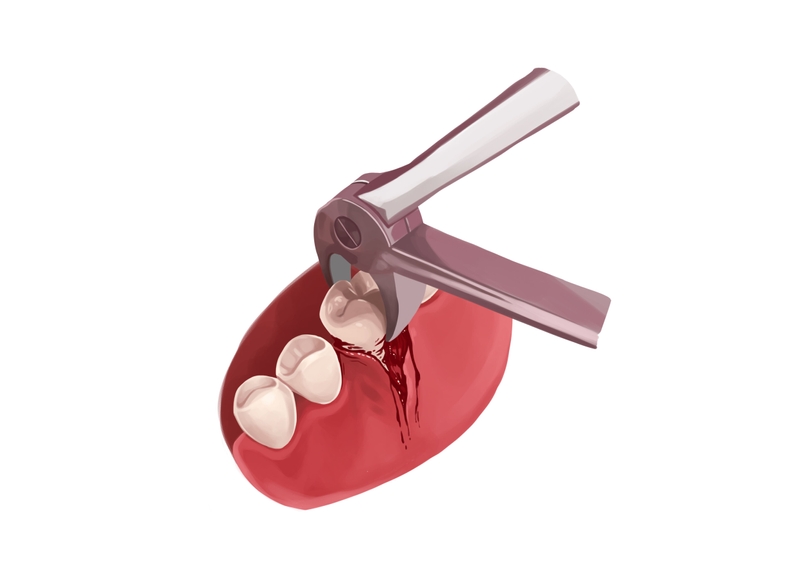- A tooth abscess is a serious condition that can lead to tooth loss and general health complications, as it is a pocket of pus surrounding the tooth.
- A tooth abscess can cause moderate or severe pain and discomfort in various parts of the mouth, head, and neck. Infection, poor oral hygiene, injury, gum disease, and other conditions can cause a tooth abscess.
- Other symptoms include sensitivity to hot and cold foods and drinks, pain when chewing and biting, sore lymph nodes, and loose teeth.
We are your immediate response service for urgent dental care. Find emergency dental near you with Authority Dental. It is simple, secure, and free.
How to get rid of a tooth abscess? Here is everything you need to know.
Tooth abscess definition

Picture by Authority Dental under CC 2.0 license
A dental abscess, also known as an infection, is a pocket of pus located around a tooth. It can lead to moderate or even severe pain. You may feel discomfort in different parts of your mouth, head, and neck. Many patients report pain in their ear, mainly if the abscess has formed in or around a molar tooth.
There are three regions where the cyst may appear:
A periapical abscess is at the tip of the root.
A periodontal abscess is in the gum around the root.
A gingival abscess forms on the gums surrounding the tooth.
Causes of tooth infection
When bacteria begin to attack blood vessels, nerves, and connective tissue of a tooth, an abscess forms, this area is known as the pulp.
The infection typically begins as a cavity that remains untreated. The bacteria can also enter through a chip or crack in the tooth.
The most common causes include:
Tooth infection symptoms

Picture by Authority Dental under CC 2.0 license
The first sign you will likely notice is a toothache. This is your body letting you know that something is wrong. However, this is not always the case.
The following tooth abscess symptoms often follow:
sensitivity to hot and cold foods and drinks,
painful chewing and biting,
fever,
swelling in the face or neck,
bad-tasting liquid in your mouth,
difficulty in swallowing or even breathing.
Many patients also report tender lymph nodes, pain radiating to the neck, jaw, or ear, swollen gums, and discolored or loose teeth.
Tooth abscess stages
The development of a tooth infection can be divided into six stages. Those include:
white spotting,
enamel decay,
decay of dentin,
infection of the pulp,
formation of the abscess, and
loss of the tooth.

It is hard to say how long each step might take, as this depends on many factors, including oral hygiene, smoking and drinking habits, as well as whether or not the patient targets the issue at all.
Obviously, the sooner you act on it, the less damage a tooth abscess will cause. Each step may be completely symptom-free, such as pain.
Lee describes it through a striking comparison: “I often explain it to patients with a pressure cooker analogy. The initial throbbing pain is the infection building immense pressure inside the tooth’s sealed chamber. When the pain suddenly vanishes, it means the nerve inside has died, making the tooth necrotic. The pressure is gone because the infection has breached the tip of the tooth’s root and is now silently spreading into the jawbone.”
“This is when a dental problem can become a medical emergency,” Lee emphasises.
This is why regular check-ups are so important. A dentist will be able to catch signs much earlier than you.
Symptoms of a tooth infection spreading to the body
A tooth abscess will not resolve on its own. Even if the cyst bursts, you still need treatment. A very serious situation arises when the infection begins to spread to the rest of the body.
Symptoms to look for include:
a high fever,
rapid heart rate,
vomiting,
confusion, and
dehydration.
In more severe cases, you may also experience less frequent and darker urine, lightheadedness, diarrhea, a headache, fatigue, chills, and an increased breathing rate.
All these could point to sepsis. This is a life-threatening infection.

Home remedies for dental abscess
There are a few things you can do at home before visiting a dentist. If you are experiencing pain, take an OTC painkiller with adherence to instructions on the packaging. If you have any inflammation, consider taking ibuprofen. Rinse your mouth with a saltwater solution.
The most important thing, though, is to refrain from bursting the cyst yourself. This is incredibly dangerous. By misapplying pressure, you can cause the pocket to burst towards the inside of your body.
How to treat an abscessed tooth?

Picture by Authority Dental under CC 2.0 license
Professional treatment aims to eliminate the infection and alleviate pain. Diagnosis is typically conducted through a visual examination and dental X-rays. This way, the dentist knows how severe the infection has spread and which treatment to use.
The solution may differ from one patient to another. Some individuals may only need one of the following procedures, while others may require a combination of them.
Draining the abscess
The first step is to remove the pus from its pocket. A cut will be made to release the liquid. This relieves pain significantly. The area will then be cleaned with saline solution.
If a foreign object caused the dental abscess, the obvious solution is to remove it. This could be, for instance, a popcorn hull, a toothbrush bristle, or a tooth fragment. The dentist will then rinse the area with saline solution.
Root canal procedure
The infected pulp may have to be removed. The dentist will drill a hole and use tiny instruments to remove the contaminated material. He or she will then seal the chamber to prevent further infection. Depending on the severity of the dental abscess, a crown may be needed to restore the tooth after the RCT.
Tooth extraction
Sometimes the position of the abscess is very unfortunate. The dentist may need to extract the tooth to drain the pus. A removal might also be necessary if the tooth is damaged beyond repair. Either way, root canal treatment is preferred, if possible.
Antibiotics
In cases where the patient’s immune system is weakened or if the infection has spread considerably, an antibiotic treatment may be prescribed. Nonetheless, the source of infection will have to be eliminated, usually through RCT.
If the tooth was extracted, antibiotics are usually not necessary, as the infection is removed along with it.
FAQ
Is a dental abscess an emergency?
Yes. Tooth infections can not only lead to loss of dentition, but they can also spread to the rest of your body. If your blood becomes contaminated, you may be at risk of meningitis or sepsis. Both are life-threatening conditions.
How long can a tooth infection go untreated?
There is no time frame here. A dental abscess is something you should treat right away. If you notice any symptoms, do not wait, as they can worsen and cause further damage.
Nonetheless, abscesses can appear in as little as 3 months and be very severe, or they could be festering for years with no signs. The best thing to do is to stay up-to-date with preventive X-rays and exams.
How to prevent tooth abscess?
The most important thing is to focus on hygiene. Brush and floss your teeth at least twice a day, ideally after every meal. Do not skip professional cleanings and regular checkups at the dentist to catch any problems early. Also, remember to change out your toothbrush every 3-4 months.
Secondly, incorporate fluoride into your diet and routine. It helps remineralize your teeth and keeps them strong. Drink fluoridated water and use toothpaste that contains this mineral. Many mouthrinses have fluoride content as well.
In terms of do’s, maintain a healthy diet. Lots of fruits and vegetables help prevent your teeth from becoming fragile. When it comes to don’ts, sugary snacks and drinks are your enemy. Avoid any tobacco products as well.
What antibiotic is used for tooth infection?
Dentists and doctors commonly prescribe antibiotics of the penicillin class, such as penicillin or amoxicillin. A course of such medication may not be enough, however. A medical professional should drain the pus from the pocket to remove dead tissue from the affected area.
Is it ok to poke a dental abscess before an appointment?
No. Do not touch your abscess yourself. It may relieve pain if done correctly, but you run a considerable risk of introducing the bacteria into your bloodstream. The pocket may not burst outward. This can have tragic consequences.
Richard Hattaway, DDS
The absence of pain does not always mean the absence of disease. More often than now, a dental abscess will be painless until it very quickly presents as severe pain.